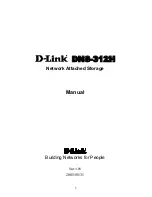
99
•
Support for hot device insertion and removal
•
Automatic resume of rebuilding on restart
•
Support for manual rebuild
•
Physical drive roaming
•
Independent stripe size configuration per logical drive
•
Ability to create up to eight logical drives per array
•
Auto-configuration support of newly added physical drive
•
Support for hotspares
•
Support for disk coercion
•
Array initialization support (fast and normal)
•
Offline data (RAID 1) verification with auto-recovery mechanism
•
Ability to prioritize configurable tasks (for online rebuild, check
consistency, migration, and expansion)
•
Logical drive availability immediately after creation
•
Variable stripe size options from 8 to 128 KB
Configuring arrays
Configure the physical disk drives in arrays. An array can consist of one
to four physical disk drives, depending on the RAID level. A RAID 0
array can consist of one to four physical drives, while a RAID 1 array
consists of two. A RAID 10 array consists of four drives.
Configuration strategies
You have two choices when creating a RAID array.
•
Maximizing fault tolerance
You can maximize fault tolerance to protect against loss of data by
using mirroring. Use mirror configuration (RAID 1) to attain this
objective.
•
Maximizing logical drive performance
You can maximize logical drive performance by using striping.
Select striping configuration (RAID 0) to attain this objective.
RAID 10 combines both striping and mirroring to provide high
data transfer rates and data redundancy.
AA G320_UG_EN.book Page 99 Tuesday, August 30, 2005 2:34 PM
Summary of Contents for Altos G320 Series
Page 1: ...Acer Altos G320 Series User s Guide ...
Page 10: ...x ...
Page 11: ...1 System tour ...
Page 25: ...2 System setup ...
Page 32: ...2 System setup 22 ...
Page 33: ...3 System upgrade ...
Page 53: ...4 BIOS setup ...
Page 81: ...5 Troubleshooting ...
Page 96: ...5 Troubleshooting 86 ...
Page 97: ...Appendix A System management utility ...
Page 104: ...Appendix A System management utility 94 ...
Page 105: ...Appendix B SATA RAID configuration ...
















































